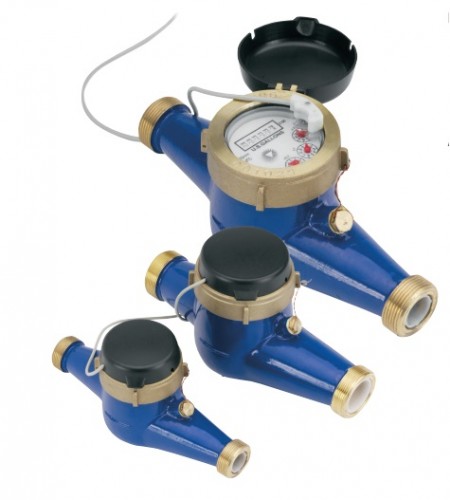MJ-Series meters use the multi-jet principle, which has been an internationally-accepted standard for many years. This type of meter is known for its wide range, simplicity, and accuracy in low-quality water. Seametrics offers cold or hot water models. The impeller is centered in a ring of jets, with inlet jets on one level and outlet jets on another. A gear train drives the register totalizer dials. For pulse output, one of the pointers is replaced by a magnet, which is detected by an encapsulated sensor attached to the outside of the lens. Pulse rate is determined by the dial on which the magnet is placed, and by the number of sensors (single or double). Changing the pulse rate requires no special tools and can be done in the field.
Mechanically, all MJ-Series meters are the same. The difference among *MJE/MJHE, *MJR/MJHR and *MJT/MJHT meters is in the sensor. MJE/MJHE meters use a solid-state, long-lasting Hall-effect sensor, which requires power. It is suited for use with Seametrics controls and metering pumps (LMI for instance) that have sensor power. MJR/MJHR meters use a two-wire reed switch. They provide a dry contact closure and do not require power. MJT/MJHT meters totalize only and do not have a sensor.
Jawa Barat - Bekasi


